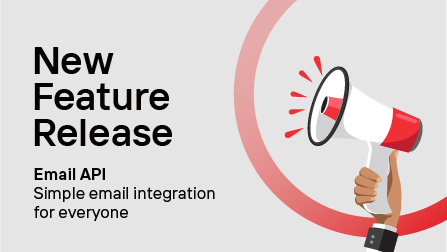Businesses usually send promotional information about their products or services to their target audience via SMS, which may or may not be welcome. They also send notifications, alerts, or reminders to those who have opted to receive them.
If the intention of the messages is to relay information, A2P or one-way SMS messaging will do. However, if businesses wish to interact with their customers they should be able to receive messages too. Here’s how two-way SMS can help.
What is two-way SMS?
A two-way SMS service allows users to send and receive an SMS from a dedicated number through a web messaging platform by using complete solutions or application programming interfaces (APIs). Two-way messaging is done using short codes or virtual long numbers (also known as virtual mobile numbers).
While virtual mobile numbers resemble standard phone numbers, short codes have 3-6 digits. Short codes can be used only within a country. Different countries have different regulations and requirements regarding them.
Advantages of two-way SMS
SMS marketing helps businesses create, schedule, and automate campaigns. Two-way SMS can be especially fruitful, given that 51 percent of millennials are willing to share their mobile number if they are offered an incentive.
-
Immediate, direct message delivery: text messages are usually delivered within seconds, which helps businesses to deliver time-sensitive messages instantly. Also, SMS open rates and response rates are considerably higher than emails. The faster and more direct the communication, the sooner consumers make purchases. It also encourages quick responses to other marketing activities such as surveys.
-
Automation: the two-way SMS service can be used to set up automated, dynamic responses based on pre-defined keywords that identify customer preferences. This saves time and resources.
-
User-friendly APIs: good two-way SMS providers offer easy-to-use APIs by which businesses can send, receive and monitor messages. They can be integrated easily with any third-party tools or applications.
-
Low cost, high conversion, and ROI: conversion rates of call-to-action SMS texts are high because such messages are short, clear, and do not contain many links or images. SMS campaigns have lower setup and running costs than other types of marketing. ROI (return on investment) is higher as businesses are dealing with existing customers or people who are willing to receive messages about their products and services. Businesses also get valuable insights by using two-way SMS service and persuading customers to participate in surveys.
-
Multi-faceted CRM: the two-way SMS system can be integrated with customer relationship management (CRM) systems to schedule messages, set up reminders, and automate responses from email to SMS. All reply messages can also be sent to the email inbox (SMS to email).
-
Easy access: when someone chooses to receive SMS messages, businesses don't need to remind them to whitelist their short code to prevent their messages landing in spam folders. Moreover, even those who own basic mobile phones can send and receive text messages. This makes SMS a highly accessible and effective tool for businesses to reach out to consumers.
-
Manifold uses: businesses can use the two-way SMS system to create interactive and appealing marketing campaigns. However, it is useful not only in sales but in many business operations and across industries. SMS is used in lead generation, customer service, billing and collections, supply chain management, travel, internal communication, and more.
Two-way SMS: best practices
Businesses should adopt the following best practices when they use two-way SMS.
- Ensure that the receiver has consciously chosen to receive text messages.
- Focus on receivers' requirements upon receiving permission to engage with them.
- Always provide accurate information.
- Keep all messages short and clear.
- Be mindful of the receivers' circumstances and preferences when soliciting feedback.
- Engage receivers only in ways they prefer.
- Remember that every message is an opportunity to build trust and goodwill or to lose them.
Despite the advent of many new modes of communication, SMS has always retained its popularity. Businesses should use this simple and flexible tool to interact with their target audience and gain respect and loyalty.
Read Now: What is Conversational Commerce and Why is it Important?


